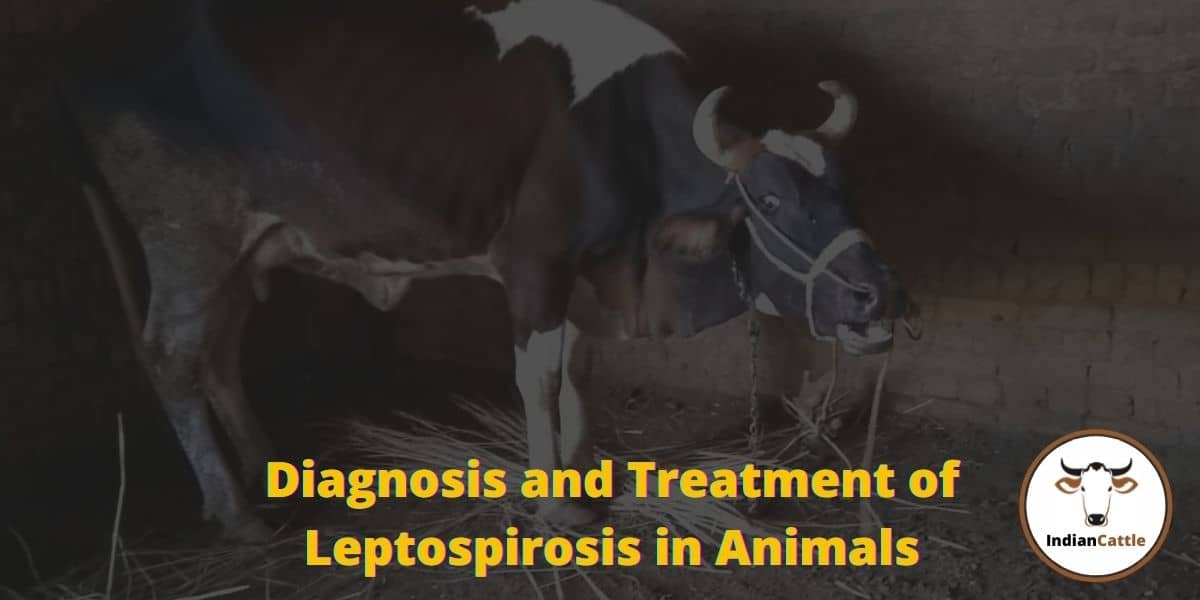
Diagnosis and Treatment of Leptospirosis in Animals
Leptospirosis is a common bacterial infection in cattle causing infertility, abortion and poor milk yield. It is a zoonotic important disease with a worldwide distribution. The disease affects all mammals and has a broad range of clinical effects from mild, sub clinical infection to multiple organ failure and death. Leptospira in humans causes influenza like symptoms, with severe headaches. Leptospirosis spreads most often when animals exposed to flood or waterlogging due to heavy rainfall.
Aetiology: Many sero-vars are known to be pathogens but in case of cattle L. icterohaemorrhagica and L. hardjo are important. L. icterohaemorrhagica causes haemorrhagic disease whereas H. hardjo is known to cause reproductive problems in cattle and buffalo.
Species Affected: Cattle, buffalo, horse, pigs, sheep and dogs. The disease is of zoonotic importance.
Mode of Transmission: Through contaminated drinking water, mixed or shared grazing, pasture contamination, contact with urine and other fluids from the infected animal.
How human get leptospirosis : The organisms enter in the body through mucus membranes of eyes , nose, and mouth, through cuts or scratch and through Contaminated drinking water.
Clinical Signs: The clinical signs of leptospirosis depend on the herds degree of resistance or immunity, the infecting serovar and the age of the animal infected. Rise in temperature, reduced appetite, depression, diarrhoea, sudden drop in milk, Jaundice, haemoglobinuria, abortions in last three months, vomiting in dogs, Animal become thirsty and passes little quantity of urine.
Differential Diagnosis: a) Bovine virus diarrhoea infection
- Lungworm infestation
- Sudden change in Feeding regimen
- Infectious Bovine Rhinotracheitis
- Salmonellosis etc.
Specimen Require For Laboratory Investigation: a} In ailing animals
- Whole blood at height of temperature, on ice.
- Serum sample on ice.
- Freshly voided urine on ice.
- Blood smears and urine smears.
Diagnostic Tests in Laboratory: Cultural test, Serological, microscopic agglutination tests, ELISA, immunofluorescence, PCR etc.
Post Mortem Findings: Anaemia, Jaundice, haemoglobinuria, enlargement of spleen, congestion in kidneys with petechial haemorrhages. Sub-serous haemorrhages and nephritis in dogs.
Diagnosis: Examination of blood smears and urine smears. Gram negative spirochetes.
Differential Tests in Laboratory :
- Examination of blood smears and urine smears.
- Isolation and identification of organisms.
- Histopathological examination.
Treatment: Leptospira can treated with antibiotics such as penicillin, Ampicillin, Amoxicillin. Similarly the tetracycline, oxytetracycline, ceftiofur, have also been found to be effective. In monogastric animals this disease can also be treated with drugs like erythromycin, tiamulin and tylosin.
Prophylaxis : Vaccination as per instructions of manufacturers (for L. hardjo)
(Please also read a blog on the Leptospirosis in Animals by the different author)
You may like to read: Flies in the Farm? Your Cows May Have This Disease
| Dr. V. M. Bhuktar
Former I/c Joint Commissioner A. H. Western Regional Disease Diagnostic Laboratory (WRDDL) Pune M.S |
Dr. Harischandra J. Abhyankar
Livestock Development Officer (extension) |
